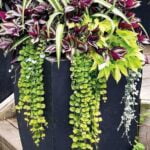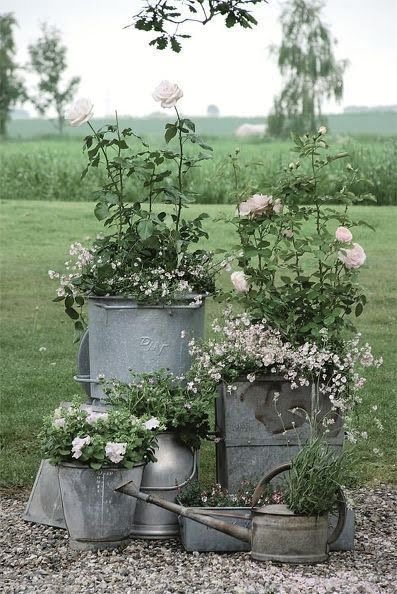Landscape design plays a crucial role in transforming outdoor spaces, creating a visually appealing and functional environment. Whether you have a spacious backyard or a small garden, implementing the right landscape ideas can enhance the beauty and usability of your outdoor area. From choosing the right plants to incorporating hardscapes and water features, there are countless ways to elevate the design of your landscape.
When it comes to landscape ideas, selecting the perfect combination of plants, trees, and shrubs is essential for achieving a stunning outdoor space. The right choices can not only enhance the aesthetic appeal but also contribute to the overall health and sustainability of your landscape.
In addition to plant selection, hardscapes such as pathways, patios, and structures play a significant role in defining the layout and functionality of outdoor spaces. From providing walking paths to creating designated areas for relaxation and entertainment, incorporating hardscapes is an integral part of landscape design.
Choosing the Right Plants
When it comes to creating a stunning landscape, choosing the right plants is key. Whether you’re interested in colorful flowers, lush shrubs, or majestic trees, selecting the best options for your outdoor space can make a significant impact on the overall design. Here are some tips for choosing the right plants to transform your landscape:
- Consider the climate: Before selecting any plants for your landscape, it’s essential to take into account the climate in your area. Some plants thrive in hot and dry conditions, while others prefer cooler and wetter climates. Researching which plants are suitable for your specific climate will ensure that they flourish in your landscape.
- Assess sunlight and soil conditions: Different plants have varying sunlight and soil requirements. Some may need full sun exposure to thrive, while others prefer shaded areas. Similarly, certain plants require well-drained soil, while others can tolerate more moisture. By understanding these needs, you can select plants that will thrive in your yard.
- Plan for diversity: A visually appealing landscape often includes a diverse selection of plants with different colors, textures, and heights. Incorporating a mix of flowers, shrubs, and trees creates interest and depth in the overall design. Additionally, choosing a variety of plants can also attract different types of wildlife to your landscape.
By carefully considering these factors when selecting plants for your landscape, you can create a vibrant and visually stunning outdoor space that complements your home’s architecture and enhances its natural surroundings. With thoughtful planning and consideration, you can achieve a beautifully landscaped yard that brings joy and beauty year-round.
Incorporating Hardscapes
Pathways
One popular hardscape feature is a well-designed pathway that leads visitors through the garden or yard. Consider using materials such as natural stone, pavers, or gravel to create a durable and visually appealing pathway. Meandering paths can add visual interest to a landscape and invite exploration, while straight paths offer a more formal and structured look.
Patios
A patio serves as an outdoor extension of your home, providing a space for relaxation, dining, and entertaining. When incorporating a patio into your landscape design, think about how you intend to use the space. Will it be used for outdoor dining? Do you want to include a fire pit or seating area? Choose materials that complement the style of your home and consider incorporating features such as built-in seating or decorative planters for added flair.
Other Structures
In addition to pathways and patios, there are several other hardscape structures that can enhance the overall design of your landscape. Consider adding retaining walls to create levels in sloped areas or define different sections of your yard. A pergola or arbor can provide shade and vertical interest while also supporting climbing plants like vines and roses. Outdoor kitchens, fireplaces, or water features are also popular additions that can transform an ordinary yard into an inviting outdoor oasis.
By incorporating these hardscape elements into your landscape design, you can create an outdoor space that is not only beautiful but also functional and enjoyable. Whether you choose to add pathways for wandering through a garden, a patio for hosting gatherings, or other structures for added interest, careful planning and execution will result in a stunning landscape that reflects your personal style and enhances your outdoor living experience.
Water Features
When it comes to creating a visually stunning landscape, incorporating water features can take your outdoor space to the next level. Water features not only add tranquility and ambiance but also provide numerous benefits for the environment and wildlife. From fountains to ponds and waterfalls, these elements can enhance the overall design of your landscape while offering a sense of serenity.
Benefits of including water features in your landscape:
– Relaxation: The sound of running water can create a calming atmosphere, providing a peaceful retreat from the stresses of everyday life.
– Wildlife attraction: Ponds and fountains can attract birds, butterflies, and other wildlife, adding to the natural beauty of your landscape.
– Visual appeal: Water features serve as eye-catching focal points, creating an element of elegance and sophistication in your outdoor space.
Design options for water features:
1. Fountains: Consider adding a tiered fountain for a classic look or a modern sculpture-style fountain for a contemporary feel.
2. Ponds: Create a serene oasis with a pond surrounded by lush vegetation or incorporate aquatic plants for added visual interest.
3. Waterfalls: Incorporate natural stone elements to create a cascading waterfall that adds movement and energy to your landscape.
From small-scale fountains to large-scale ponds, there are countless landscape ideas when it comes to water features. Whether you have a spacious yard or a cozy patio, there are design options available to suit your personal style and budget. With proper planning and maintenance, incorporating water features into your landscape can transform your outdoor space into a tranquil sanctuary.
Creative Lighting
When it comes to enhancing the aesthetic appeal of your landscape, creative lighting can make a significant impact. Thoughtfully placed outdoor lighting can highlight key features such as trees, architectural elements, and garden beds while creating an inviting ambiance for evening entertaining or relaxation. There are various landscape ideas that can be incorporated to achieve this effect, adding both beauty and functionality to the outdoor space.
One popular lighting option is the use of string lights to create a cozy and intimate atmosphere. These lights can be hung above outdoor seating areas, woven through trees, or along fences to add warmth and charm to the landscape. Additionally, pathway lighting is essential for safety and aesthetics, guiding visitors through the garden while also illuminating the surrounding plants and features.
For a more dramatic effect, uplighting can be used to showcase taller plants or architectural elements such as statues or water features. This technique involves placing light fixtures at ground level with the light directed upward, drawing attention to specific focal points within the landscape. Moonlighting is another innovative approach that involves placing lights high in trees to create a natural moonlit effect, casting gentle shadows through the branches.
Incorporating creative lighting into your landscape design does not have to be an expensive endeavor. With solar-powered options becoming increasingly affordable and efficient, homeowners have access to budget-friendly solutions that are also environmentally conscious. Whether highlighting a favorite tree or setting the mood for an outdoor social gathering, there are endless possibilities for using outdoor lighting as a key element in your overall landscape design.
| Landscape Lighting Option | Description |
|---|---|
| String Lights | Can be hung above outdoor seating areas or woven through trees for added warmth and charm. |
| Uplighting | Showcases taller plants or architectural elements by directing light upward from ground-level fixtures. |
| Moonlighting | Casts gentle shadows through trees by placing lights high in branches, creating a natural moonlit effect. |
Maintenance Tips
Maintaining a beautifully landscaped yard is crucial in preserving its aesthetic appeal and ensuring longevity. One important aspect of maintenance is regular pruning and trimming of plants, trees, and shrubs. By keeping growth in check, you can prevent overgrowth and maintain a neat and well-manicured appearance for your landscape. Additionally, it is essential to remove any dead or diseased plants to maintain the overall health of your garden.
Regular watering is also key to maintaining a beautiful landscape. Different plants have varying water requirements, so it is important to research the specific needs of your flora. Consider using a drip irrigation system for efficient and targeted watering, especially during hot summer months.
Furthermore, soil management is often overlooked but essential for maintaining a healthy landscape. Regularly test your soil to ensure it has the necessary nutrients for plant growth. You can add compost or mulch to improve soil quality as well as help retain moisture. Lastly, staying on top of weed control is crucial for the maintenance of a beautifully landscaped yard.
| Aspect | Recommendation |
|---|---|
| Pruning and Trimming | Regularly prune and trim plants to prevent overgrowth |
| Watering | Research the water requirements of your plants and consider using drip irrigation for efficient watering |
| Soil Management | Regularly test soil, add compost or mulch, and control weeds for healthy soil maintenance |
Budget-Friendly Options
Landscaping doesn’t have to break the bank. With some creativity and careful planning, it’s possible to achieve a stunning outdoor space on a limited budget. Here are some budget-friendly landscaping ideas that will help you transform your yard without emptying your wallet.
DIY Projects
One of the most cost-effective ways to enhance your landscape is by taking on do-it-yourself projects. From building raised garden beds to creating a small patio area with basic pavers, there are numerous DIY landscaping ideas that can save you money. By rolling up your sleeves and investing some time and effort, you can achieve impressive results without the high cost of professional labor.
Native Plants
Choosing native plants is not only beneficial for the environment but can also be easier on the wallet. Native plants are well-adapted to the local climate and soil conditions, which means they often require less maintenance and watering compared to exotic species. Additionally, native plants are usually more affordable as they are readily available in local nurseries and garden centers, making them a great choice for budget-conscious homeowners.
Upcycling and Repurposing
Instead of purchasing brand-new materials, consider upcycling or repurposing items to use in your landscaping design. Old pallets can be transformed into vertical gardens or used for creating unique seating areas. Salvaged bricks or stones can be used for building retaining walls or pathways. By thinking outside the box and looking for creative ways to reuse materials, you can save money while adding character and charm to your landscape.
By incorporating these budget-friendly landscape ideas into your outdoor space, you can create a beautiful and inviting environment without overspending. With careful planning and resourcefulness, it’s possible to achieve an attractive landscape that fits within your financial means while still reflecting your personal style and preferences.
Sustainable Landscaping
In conclusion, incorporating sustainable landscaping ideas into your outdoor space can have a positive impact on the environment while also creating a beautiful and functional landscape. By choosing eco-friendly practices and materials, you can reduce your carbon footprint and contribute to a healthier planet. From selecting native plants to utilizing permeable paving materials, there are numerous ways to create a sustainable landscape that is both visually appealing and environmentally conscious.
When considering landscape ideas, it’s important to look for opportunities to minimize water usage and chemical inputs. This can be achieved through the use of drought-resistant plants, rain gardens, and organic fertilizers. Additionally, incorporating features such as compost bins and using recycled materials for hardscapes are great ways to reduce waste and promote sustainability in your landscape design.
By embracing sustainable landscaping practices, you can create a yard that not only enhances the beauty of your property but also supports local ecosystems and reduces environmental impact. Whether you’re working with a limited budget or have the means to invest in more elaborate eco-friendly features, there are options available to suit every homeowner’s needs and preferences.
With proper planning and thoughtful consideration of sustainable landscaping principles, you can achieve a stunning outdoor space that benefits both your home and the planet.
Frequently Asked Questions
What Are the 7 Principles of Landscaping?
The 7 principles of landscaping are: simplicity, balance, variety, emphasis, sequence, scale/proportion, and unity. Simplicity refers to keeping the design straightforward and avoiding clutter. Balance involves creating a sense of equilibrium in the layout. Variety adds interest through different colors, textures, and shapes.
Emphasis highlights the focal point of the landscape. Sequence ensures a cohesive flow throughout the design. Scale and proportion determine the sizing of elements relative to each other and the overall space. Unity ties everything together for a cohesive and harmonious look.
What Is the Best Low Maintenance Landscaping?
When it comes to low maintenance landscaping, native plants are often recommended due to their ability to thrive without much intervention. Incorporating mulch and groundcovers can help suppress weeds and conserve moisture in the soil. Using hardscaping elements like rocks, pavers, or gravel can reduce the need for regular watering and maintenance associated with traditional lawns or ornamental plantings.
What Is the Best Low Maintenance Landscape in Florida?
The best low maintenance landscape in Florida typically includes native plants that are well-adapted to the region’s climate and soil conditions. Drought-tolerant species such as palms, saltbush, muhly grass, and coontie are popular choices for low maintenance landscapes in Florida due to their ability to withstand heat, humidity, and sandy soils without much additional care.
Additionally, incorporating irrigation systems with water-efficient drip emitters can help minimize watering needs while supporting plant health in Florida’s unique environment.

Welcome to my gardening blog! I am passionate about plants and enjoy sharing my knowledge and experiences with others. In this blog, I will write about everything related to gardening, from tips on how to get started to updates on my own garden projects.





